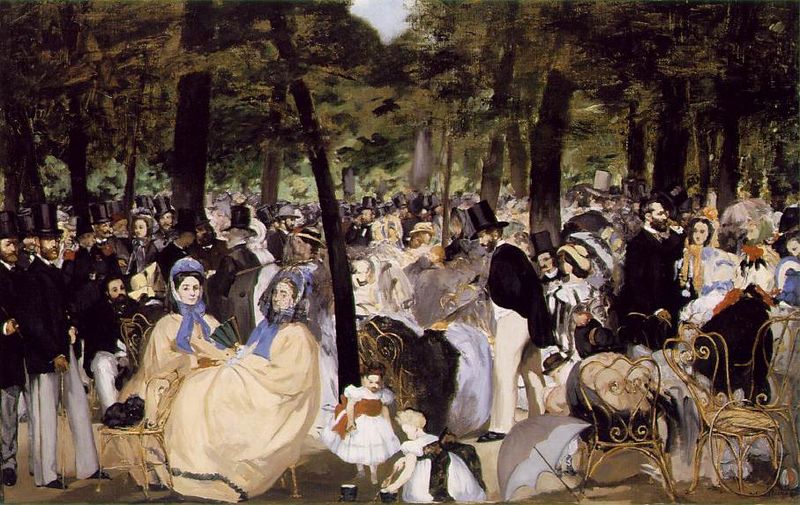The fourth of August’s summer pictures is Music in the Tuileries, which was painted by Edouard Manet in 1862 and can be seen at the National Gallery in London. The picture is a group portrait of the Parisian demi-monde enjoying a Sunday afternoon at the Jardin des Tuileries, chatting and listening to the music being played by a band which the painter has decided to exclude from his composition. Manet has incorporated the likessesses of many of his friends into the bustling social world of the picture, a cross-section of the haute bourgeoisie in which a particularly high concentration of artists, intellectuals and other Bohemian types is to be found. He included several members of his own family as well as a roll-call of Second Empire celebrities such as the composer Jacques Offenbach, several painters including Henri Fantin-Latour and Albert de Balleroy, and leading writers among whom can be spotted Zacharie Astruc and Theophile Gautier.
When the work was first exhibited, in 1863, it received a distinctly mixed critical reception. Several of the artists who would become known as Impressionists, notably Claude Monet and Frederic Bazille, were bowled over by Manet’s work, but the more conservative critics of the day were less than impressed. Paul Mantz was particularly severe. Manet’s composition struck him as disorganised and formless, while the broken play of light that animates its surface with such an eloquently restless quality roused him to declare that “this is not colour, but the caricature of colour.
The genesis of the painting was described by Manet’s childhood friend, Antonin Proust, who remarked on the way in which the painter had deliberately cultivated the role of the “flaneur” – a dandified, ironic observer of life, wandering the boulevards of Paris in search of interesting bits and pieces of city life...


